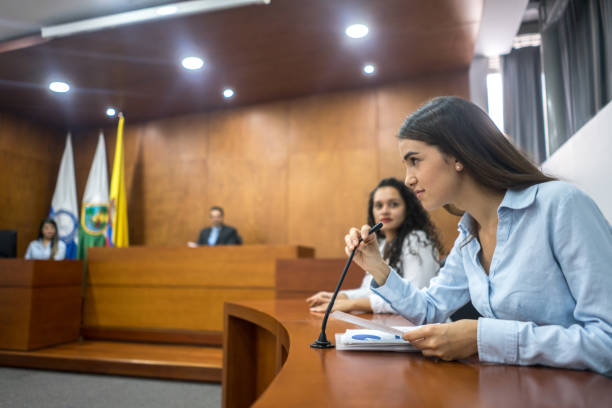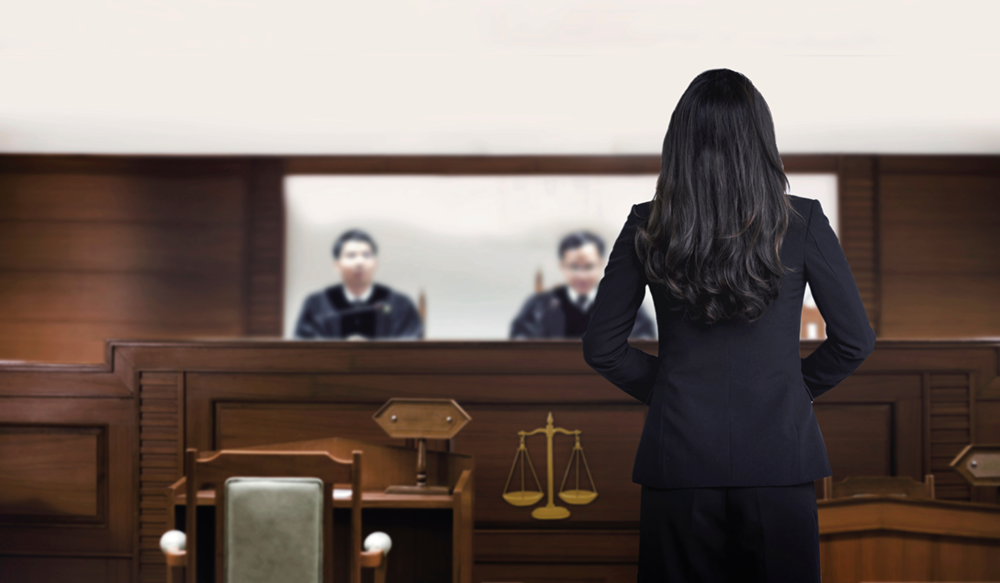Exactly how to Improve Your Instance with Engaging Trial Presentations: Expert Tips for Lawyers
Exactly how to Improve Your Instance with Engaging Trial Presentations: Expert Tips for Lawyers
Blog Article
Navigating the Intricacies of Trial Presentations: Tips for Seamless Distribution and Engaging Arguments
In the world of legal process, the art of trial discussion stands as a critical determinant of success. As attorneys browse the intricate internet of courtroom characteristics, the ability to flawlessly provide debates and evidence while astounding the court's attention comes to be critical. The intricacies fundamental in test presentations need a delicate balance of ability, technique, and skill. By sharpening techniques that make sure a polished shipment and crafting compelling disagreements that resonate with the target market, lawyers can substantially boost their advocacy. In a world where persuasion preponderates, understanding the intricacies of trial discussions is not just an option but a need for those seeking to prevail in the court.

Comprehending Test Objectives
To effectively navigate a trial, it is essential to have a clear understanding of the goals that require to be attained. Before stepping right into the courtroom, legal teams must define their goals and wanted outcomes. These goals work as guiding concepts throughout the trial, shaping strategies and affecting decision-making procedures.
Understanding trial objectives involves an extensive evaluation of the situation, lawful criteria, and the customer's ideal passions. Trial Presentations. It needs a thorough exam of the realities, recognizing key concerns, and anticipating potential obstacles. By establishing quantifiable and certain goals, attorneys can tailor their disagreements and discussions to align with the desired outcomes
In addition, a clear grip of test goals makes it possible for lawful groups to prioritize evidence, witnesses, and lawful debates successfully. It permits the advancement of a coherent story that reverberates with the discretionary, enhancing the general case discussion.

Organizing Proof Properly
Having a clear understanding of test goals lays the foundation for organizing proof successfully in legal proceedings - Trial Presentations. By straightening the discussion of evidence with the desired outcomes of the test, legal teams can reinforce their debates and improve their persuasiveness. One critical aspect of arranging evidence is categorization. Grouping proof based on themes or relevance to certain lawful components can aid enhance the presentation and make intricate info much more absorbable for the judge or court.
Another crucial element in organizing proof efficiently is establishing a rational flow. Providing evidence in a sequential and systematic manner can aid build a compelling story that sustains the legal debates being made. Additionally, making use of visual aids such as charts, timelines, or graphs can additionally boost the organization of proof and aid in clarifying complicated partnerships or sequences of events.
Additionally, making certain that all evidence provided is permissible and relevant to the instance is important. Unnecessary or inadmissible evidence can interfere with the stamina of the debate and possibly hurt the reliability of the providing celebration. A thorough evaluation and choice process must be embarked on to consist of just the most impactful and legitimately audio evidence in the trial presentation.
Crafting Persuasive Narratives
Crafting engaging narratives plays a pivotal duty in providing persuasive disagreements during lawful procedures. When creating a narrative for a test discussion, it is important to develop a clear storyline that highlights vital points and attaches them in a meaningful manner. By weaving together proof, statement, and lawful disagreements right into a persuasive and natural narrative, lawful professionals can successfully advocate for their clients and raise the possibility of i was reading this a desirable result in the court room.
Mastering Aesthetic Help
Effective usage of aesthetic aids is crucial to boosting the impact and clearness of test presentations. Visual help, when made use of strategically, have the power to streamline complicated details, reinforce crucial factors, and leave a lasting perception on the court and court. To understand visual aids in trial discussions, it is essential to make sure that they are clear, succinct, and pertinent to the disagreements being made.
When including visual aids, such as charts, timelines, charts, or photographs, into a trial discussion, it is vital to maintain them aesthetically appealing yet specialist. The visuals need to enhance the verbal arguments, offering a graph of the details being gone over without frustrating the target market with unneeded information.
Moreover, practicing with the aesthetic help ahead of time is vital to make sure a smooth shipment during the trial. Familiarizing oneself with the content, transitions, and timings of each visual help can aid keep the circulation of the presentation and avoid technical glitches that might develop.
Providing Impactful Closing Disagreements
A compelling closing argument acts as the end result of a trial presentation, encapsulating the core story and convincing the judge and jury in the direction of a favorable choice. To provide an impactful closing argument, it is crucial to succinctly evaluate bottom lines, highlight the toughness of your case, and deal this with any kind of weaknesses in a calculated fashion. Begin by describing the major arguments that sustain your customer's placement, emphasizing why the evidence offered throughout the test supports your narrative. It is important to develop a sense of cohesion and clearness, leading the judge and jury towards the wanted final thought.
Additionally, including psychological allure can further enhance your closing disagreement. Eventually, a well-crafted closing argument ought to leave an enduring impact, engaging the court and court to rule in your customer's support.
Verdict
To conclude, mastering test discussions entails understanding objectives, organizing proof, crafting stories, utilizing aesthetic help, and providing impactful closing disagreements. By applying these approaches successfully, legal representatives can present their instance seamlessly and make engaging disagreements in the court. It is important to browse the intricacies of trial presentations with precision and ability to attain success in lawful procedures.
By lining up the presentation of proof with the wanted results of the trial, legal groups can reinforce their disagreements and improve their persuasiveness (Trial Presentations). To master aesthetic help in trial presentations, this content it is crucial to ensure that they are clear, succinct, and appropriate to the arguments being made
An engaging closing disagreement serves as the culmination of a test discussion, enveloping the core narrative and encouraging the court and jury in the direction of a positive decision. Begin by outlining the major disagreements that sustain your customer's position, stressing why the evidence offered throughout the trial sustains your story.In final thought, mastering test presentations entails comprehending objectives, arranging evidence, crafting stories, utilizing aesthetic aids, and providing impactful closing arguments.
Report this page